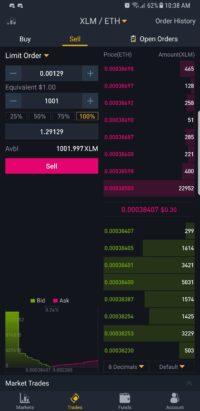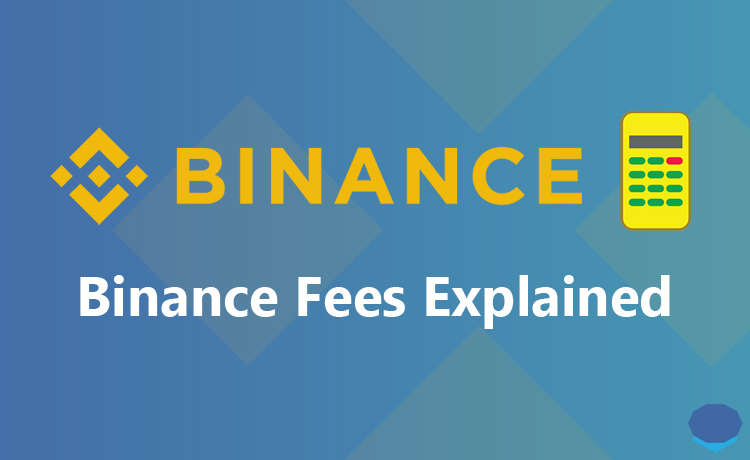
Binance is a well known cryptocurrency exchange. With over $100 Billion in daily trading volume, it is without doubt one of the largest crypto exchanges as of 2021.
The exchange is considered one of the most inexpensive platforms to buy and sell Bitcoin. Across its products, Binance constantly offers lower charges of doing business, and this is of advantage not only to the platform but most importantly to its users.
In this guide, we are focusing on the Binance fees. We will discuss the fees charged when using Binance’s most popular products so you can understand and recognize what to expect from the platform when it comes to costs.
Introduction to Binance fees
Binance exchange was launched in 2017 by Changpeng Zhao, and to motivate usage, it presented a 50% discount to its clients that opted to use Binance Coin (BNB) to pay for trading fees. BNB is the native Binance exchange’s cryptocurrency used during the token sale to increase funds for developing and launching it.
According to the company’s white paper, Binance presents a tiered discount fee scheduled to be halved each year. In the first year of operation, the fee stood at 50%, then 25% the second year, 12.5% the third year, and 6.75% the fourth year. Binance would stop to offer any discount to its customers beginning in the fifth year onwards, even those that use BNB to pay for trading fees.
It is worth noting that Binance has presented to keep its 25% discount that was only applicable in its second year. All users trading assets on the platform get to enjoy this decreased price given that they opt to pay for their trading activities using BNB.
Tip: For even more savings, Binance users can choose to convert small balances to BNB. Small balances (or dust) are small quantities of coins or tokens that are too small to alternate or transfer. They are regularly left behind after trades, and with Binance, customers can convert these to BNB, which can as a result be used to pay for transaction fees.
Binance fees
Trading fees
Binance considers a few factors when figuring out the charges to be paid by each of their customers for every trade. These encompass prior 30-day trading volume, BNB holdings, and whether or not they are makers or takers.
The previous 30-day buying and selling volume is used to group every customer into 10-level tiers titled VIP-0 through VIP-9. The greater your trading volume, the greater you will be positioned in the tiered fee schedule, which will qualify you for lower rates. Additionally, the more you hold in BNB, the more your VIP tier you will be placed.
Finally, via the maker/taker model, Binance determines how much to pay in every specific tier. Makers are traders that create trades to be filled at a later, more convenient price point. They bring liquidity to the marketplace. They, therefore, are rewarded with decrease fees.
On the other hand, takers place orders that are filled immediately at the prevailing market price. They efficaciously ‘take’ liquidity out of the marketplace. They are typically charged extra for their trades.
To put it simply, every new trader on Binance will be charged 0.1% per spot trade.
Here’s a full rundown of all the fees charged to every tier as of 2021:

Note: You will observe in the final column that Binance provides further reductions to its affiliates for successful referrals amounting to an extra 25% and a 20% kickback discount. Add up all these discounts, and you end up paying as low as 0.012%/0.024% maker/taker fees when the average prices throughout other competing platforms are 0.25%.
Deposit & Withdrawal fees
Binance presents a multitude of deposit and withdrawal methods. Their availability to a specific Binance user relies on their geographical location. However, generally, Binance has one of the most conclusive lists of supported payment methods.
All deposits into Binance are free for both fiat currencies and cryptocurrency assets. Not to be confused, though, as different networks charge transaction fees for facilitating a transfer. For instance, if you are depositing Bitcoin (BTC) into your Binance account, Bitcoin miners charge a transaction fee for making use of the network.
Similarly, fiat transfers will cost you a transaction fee depending on the payment method used. Credit cards will usually be the most expensive in comparison to any other available methods such as bank transfers, SEPA, [temporarily suspended EUR deposits via SEPA bank transfers since July 7, 2021] and SWIFT transfers, amongst others. But Binance will not cost any extra fees on top of this network or payment processing fees.
The exchange, however, costs a fee for withdrawal transactions. These are any transfers out of your Binance account. They are dependent on the asset being transferred and the asset’s network.

Note: You will observe in the final column that Binance provides further reductions to its affiliates for successful referrals amounting to an extra 25% and a 20% kickback discount. Add up all these discounts, and you end up paying as low as 0.012%/0.024% maker/taker fees when the average prices throughout other competing platforms are 0.25%.
Deposit & Withdrawal fees
Binance presents a multitude of deposit and withdrawal methods. Their availability to a specific Binance user relies on their geographical location. However, generally, Binance has one of the most conclusive lists of supported payment methods.
All deposits into Binance are free for both fiat currencies and cryptocurrency assets. Not to be confused, though, as different networks charge transaction fees for facilitating a transfer. For instance, if you are depositing Bitcoin (BTC) into your Binance account, Bitcoin miners charge a transaction fee for making use of the network.
Similarly, fiat transfers will cost you a transaction fee depending on the payment method used. Credit cards will usually be the most expensive in comparison to any other available methods such as bank transfers, SEPA, [temporarily suspended EUR deposits via SEPA bank transfers since July 7, 2021] and SWIFT transfers, amongst others. But Binance will not cost any extra fees on top of this network or payment processing fees.
The exchange, however, costs a fee for withdrawal transactions.
You will note that the withdrawal fees for the same asset may additionally differ depending on the network you use to transfer it. For instance, renBTC, which is available as a Binance Smart Chain (BSC) token and an ERC-20 token (on the Ethereum network), attracts two different rates. For the entire list of all assets supported by Binance and their withdrawal fees
Margin borrow interest rate
Trading on margin or margin trading is the practice of borrowing funds from a platform to open larger positions than your available assets. This way, the trader can leverage their margin to make outsized gains (or losses) depending on the quantity of leverage.
Binance permits its customers to trade on margins and borrow from funds from the exchange. In return, the debtors pay interest on the borrowed funds. Interest rates differ from asset to asset, and the interest is charged primarily based on the amount of time (in hours) the loan remains unpaid.

The photo above indicates some of the coins available for margin trading and their interest rates. The charges vary depending on the user’s VIP tier, which is additionally determined via their prior 30-day trading volume. The more the trading volume, the more their VIP tier and the lesser the interest rate.
Futures trading rate
Binance maintains a futures buying and selling platform that is built-in seamlessly with the spot buying and selling platform. Spot buying and selling includes trades settled in real-time at the market rate (i.e., on the spot.) On the other hand, Futures are agreements between traders to settle a trade at a later time at a predetermined price.
Binance gives Futures that expire either quarterly or never expire. The latter is regularly referred to as perpetual Futures. Additionally, these futures can be traded using leverage to a factor of 125x the margin.
The expenses for trading Futures on Binance are guided by the Maker/Taker model mentioned in the Trading fees section. This means that Makers get better rates in comparison to Takers.
The prices are additionally affected with the aid of the trader’s prior 30-day trading volume grouped into VIP tiers ranging from VIP0 to VIP9. The more your trading volume, the less you will pay in fees.
Binance gives an extra 10% discount on Futures trading fees paid using BNB.

Final thoughts
It’s challenging to argue against Binance’s selling proposition, which consists of a complete suite of products and services and the platform’s low cost. It is pretty cheap, convenient, and secure.
Important: This information does not highlight all the services that Binance gives and the fees charged. It solely focuses on the most popular and in-demand services. The fee rates alternate from time to time, so make sure to check with the official Binance Fees schedule before trading to avoid any surprises.
